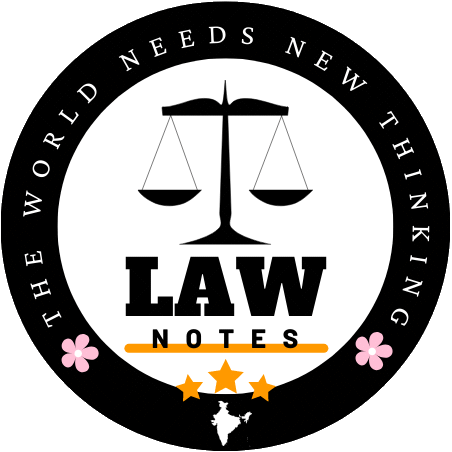Res Gestae
Section 6 of the Indian Evidence Act: ‘Facts which though not in issue, are so connected with a fact in issue as to form part of the same transaction, are relevant, whether they occurred at the same time and place or at different time and place.’

The Latin term for this doctrine is Res Gestae, which translates to “things done.” It explains a spontaneous statement made by someone soon after an occurrence, before the human mind has a chance to make up a fake story. A statement made under Res Gestae is one that is made on the spot, that is, during or immediately after the conduct of the crime. There is extremely little opportunity for uncertainty or doubt as a result. Res Gestae is a doctrine that places a proclamation in such close proximity to the event’s commission that there is almost no opportunity for confusion or incorrect interpretation.
- ‘Res Gestae’ basically means a transaction (thing done/ subject matter).
- The test of admissibility of evidence – as a part of Res Gestae is whether the Act, declaration or exclamation is an intimately interwoven or connected with the principal facts.
- ‘Facts forming part of same transaction’ – This includes both physical acts and words spoken whether by person doing such acts, the person to whom such acts, the person to whom such acts are done or any other person(s).
- It is a general rule – The evidence of connected precedent or surrounding circumstances is proper to show the probability that the principal fact has happened in all cases where it may naturally be assumed that a connection exists between main fact and subordinate fact.
- The act or transmission may be completed in a moment of time, or may extend through a period of days or weeks, or even months.
Pre-Conditions to Res Gestae:
- Statement must explain and characterize the incident in some manner.
- Statement must be a statement of fact and not opinion.
- Statement must be spontaneous and not merely narrative of the past.
- Statement must include participants of transaction; In criminal: Victim, accused, eye-witness; In civil: Attesting witnesses and concerned parties
- Statements made by bystanders provided their presence on the spot is established.
Note: Filing of FIR forms part of Res Gestae.
A TRANSACTION
The term “transaction,” as used in this section, is defined by a single name as any unlawful act, contract, wrongdoing, or other possible area of inquiry. A suitable distance from the time, pace, and cause and effect, it includes both the immediate cause and effect of an act or event as well as its collection of pertinent circumstances, the other required antecedents of its occurrence, connected with it.13The proximity of time, unity or proximity of place, continuity of acts, and community of purpose or design are reliable indicators of what kind of transaction it is.
BYSTANDER
All the people present at the time of the incident are referred to as bystanders in section 6. When several others arrived at the scene shortly after a murder and were informed by the eye witnesses who the two perpetrators were, their testimony is important. Therefore, the declaration must try to show and explain the event at issue and be mostly contemporaneous with it.
TEST FOR ADMISSION OF EVIDENCE UNDER RES-GESTAE
The judge’s first consideration is whether the likelihood of fabrication or distortion can be discounted. The judge must first take into account the circumstances surrounding the specific statement in order to be convinced that the incident was so extraordinary, jarring, or fanatical as to dominate the victim’s thoughts and that the victim’s utterance was an instinctive response to that incident, leaving no real room for thoughtful reflection. If the statement was delivered under circumstances of approximate but not exact contemporaneity, the judge would be permitted to draw the conclusion that the event’s involvement or pressure would rule out any possibility of fabrication or distortion.
STATEMENT SHOWING MOTIVE AND INTENTION
The declaration of someone’s intention to do something is not admissible as proof that they really did it. Investigating what someone says he is intending to do to determine if he carried out his claimed intention is a completely different subject from examining what someone says when his intention is at stake. In order to establish the motivation behind a behavior, evidence of the comments that accompany the behavior may be provided. Because the declarant may change his opinion between the declaration and the act, statements that are not contemporaneous with the act cannot identify the motivation behind it.
Expansion of the Doctrine of Res Gestae
Courts have gradually expanded this section’s application to include situations including domestic abuse, kid witnesses, etc. Domestic abuse and assault cases invariably have a shocking event, which frequently involves the problem of ecstatic speech. Only the victims in these situations can name the suspected offender. Therefore, it is necessary to accept such victim evidence. Rape cases typically happen alone. Therefore, there is no eyewitness to such an event. Rape and domestic violence cases are distinct from all other crimes.
- Gentela Vijayavardhan Rao v. State of A.P., (1996) 6 SCC 241:
The principle of law embodied in Section 6 of the Evidence Act is usually known as the rule of res gestae recognised in English law. The essence of the doctrine is that a fact which, though not in issue, is so connected with the fact in issue “as to form part of the same transaction” becomes relevant by itself. This rule is, roughly speaking, an exception to the general rule that hearsay evidence is not admissible. The rationale in making certain statement or fact admissible under Section 6 of the Evidence Act is on account of the spontaneity and immediacy of such statement or fact in relation to the fact in issue. But it is necessary that such fact or statement must be a part of the same transaction. In other words, such statement must have been made contemporaneous with the acts which constitute the offence or at least immediately thereafter. But if there was an interval, however slight it may be, which was sufficient enough for fabrication then the statement is not part of res gestae. In R. v. Lillyman [(1896) 2 QB 167 : (1895-99) All ER Rep 586] a statement made by a raped woman after the ravishment was held to be not part of the res gestae on account of some interval of time lapsing between the act of rape and the making of the statement. Privy Council while considering the extent up to which this rule of res gestae can be allowed as an exemption to the inhibition against hearsay evidence, has observed in Teper v. R. [(1952) 2 All ER 447]
In Bishna vs State of West Bengal AIR 2006 SC 302, where the two witnesses reached the place of occurrence immediately after the incident had taken place and found the dead body of Prankrishna and injured Nepal in an unconscious state. One of them found the mother of Prannkrishna and Nepal weeping and heard about the entire incident from an eye-witness and the role played by each of the appellants, their testimony was held to be admissible under section 6 of the Evidence Act. In all the cases mentioned above the test applied to make the evidence admissible was to consider that was the statement was made at the spur of the moment without an opportunity to concoct and fabricate anything.
“The rule that in a criminal trial hearsay evidence is admissible if it forms part of the res gestae is based on the propositions that the human utterance is both a fact and a means of communication and that human action may be so interwoven with words that the significance of the action cannot be understood without the correlative words and the dissociation of the words from the action would impede the discovery of the truth. It is essential that the words sought to be proved by hearsay should be, if not absolutely contemporaneous with the action or event, at least so clearly associated with it that they are part of the thing being done, and so an item or part of the real evidence and not merely a reported statement.”
Conclusion:
When evidence cannot be presented under another part of the Indian Evidence Act, it is typically presented under res gestae. Legislators wanted to prevent unfairness, or cases being rejected for lack of proof. Any statement that is not accepted under Section 6 may nonetheless be admitted under Section 157 as corroboration.
This doctrine shouldn’t ever be extended to infinity, according to court precedent. Because of this, Indian courts have always taken into account the “continuity of the transaction” test. According to section 6 of the evidence statute, no statement that was made a long time after the incident and that wasn’t in response to it is admissible. However, because there was adequate evidence that the victim was still experiencing tension and excitement following the purchase, the courts have allowed some statements that were made a significant amount of time after the transaction had taken place. As a result, whatever was said was a response to the event. Sec. 6’s strength is in how ambiguous it is.

